Back on 28 November 1959, the village hall in New Gilston Hall was officially opened. The Leven Mail of 2 December reported on the event and featured the photograph below. At the time, the total population of New Gilston, Woodside and the surrounding countryside was around 240. And yet, the community had raised over £800 in a short space of time - such was their determination to have a new hall. The newspaper piece described the area as "extremely isolated, with a bus passing through to Leven only every two hours". The remote location was sited as a reason for the necessity for a hall as it would enable social functions to take place, strengthening the community. Other uses mentioned for the hall were private meetings and a base for the regular meetings of the New Gilston and Woodside W.R.I..
The hall was opened by Brigadier W.C. Black of Teasses and "there was an excellent turnout of the villagers and also many friends from the Largo area". All were welcomed by the local school mistress Miss J.A.H. Thomson who was chairwoman of the hall committee. She explained how, in addition to the funds raised by the locals, a £2,880 grant had been allocated from the Scottish Committee of Social Service towards the cost of building the hall. Major Douglas Brown of Edinburgh was in attendance representing that committee. Perhaps some of those individuals mentioned are featured in the indistinct photograph.
Major Brown commented that in his opinion such a village hall could be likened to a church or school, as it played an equally important role in rural life and he was "really glad to see the end of a long and frustrating period for the villagers themselves". He congratulated the villagers on their "magnificent effort" in raising such as large amount for a small place. He urged support for the hall from the community. Miss Thomson went on to explain how the villagers had elected to have a better hall than would have been allocated by default. In particular, they wanted a better floor for dances. The cost of their extra requirements were met by a St Andrews District Council grant of £50 and a larger amount from Fife County Council's Further Education Committee. Provost John Nicol of Burntisland was in attendance representing the latter. He spoke of how he was proud to have played a part in the hall coming to fruition and hoped that "many happy hours, evenings and days will be spent in this hall for years to come".
As Brigadier Black carried out the opening ceremony he said that "we must all express our thanks to the committee who have done such a wonderful job of work. I think it was the Coronation Committee and the W.R.I. who started off in the old hall making plans for this new one. They are entitled to the gratitude of the whole community". He declared the hall (shown left of centre on the map above) open and it was then dedicated by the Reverend J.S. Paterson, minister of Largo and Newburn Parish Church.
The "old hall" referred to was the Woodside Hall, which was used largely by the New Gilston and Woodside W.R.I.. It had been erected in 1933 and was a wooden structure. The report from the 5 August 1933 Fife Free Press below tells of that hall's official opening. Mrs David Bruce of Charlestown, sister-in-law of the Earl of Elgin performed the opening ceremony. The ladies of the W.R.I. had been collecting for three years for the new hall and local people built and furnished the facility. Interestingly, the structure was previously "four houses....purchased in Largo for £35". Surely, all of those involved in the creation of both the 1933 hall and the 1959 replacement would be heartened to see how well the village hall continues to be used by the residents of Woodside and New Gilston to this day.


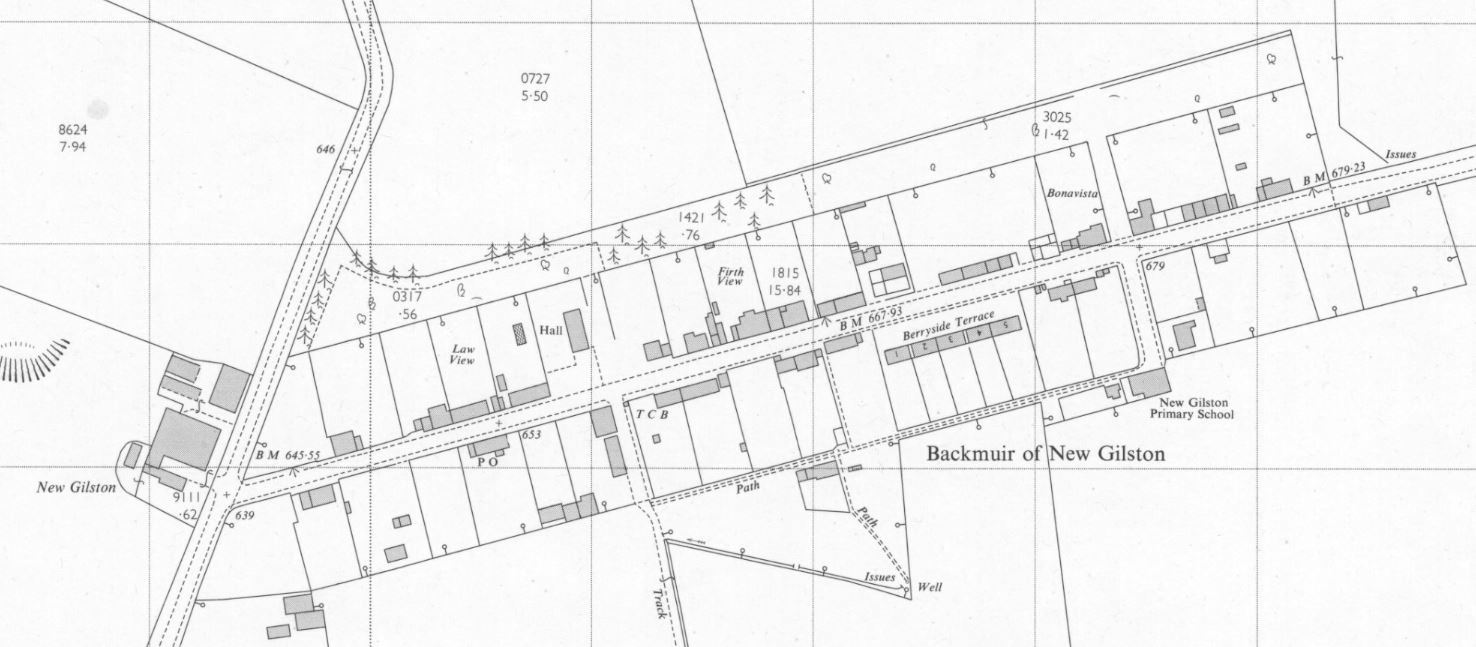
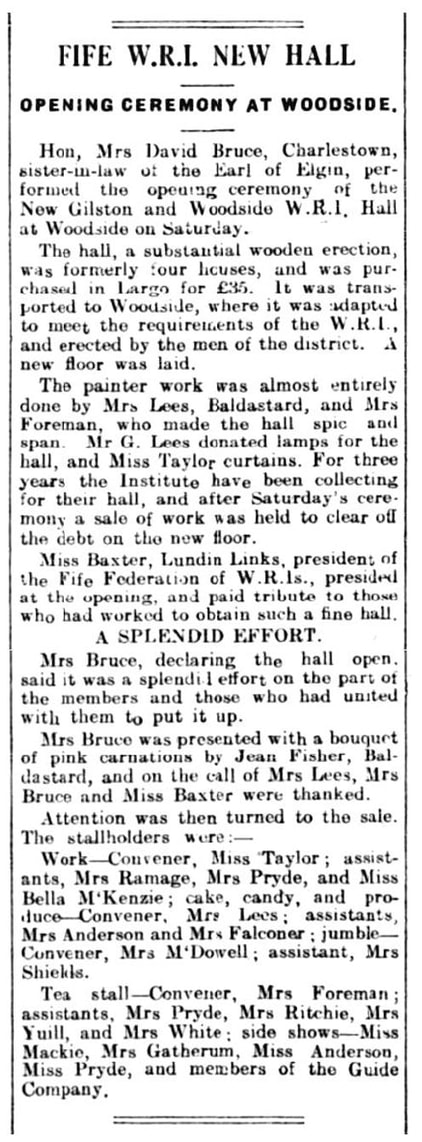
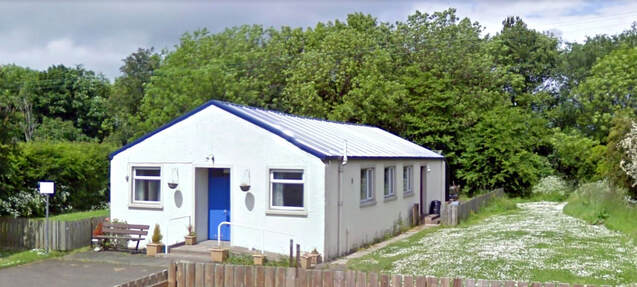

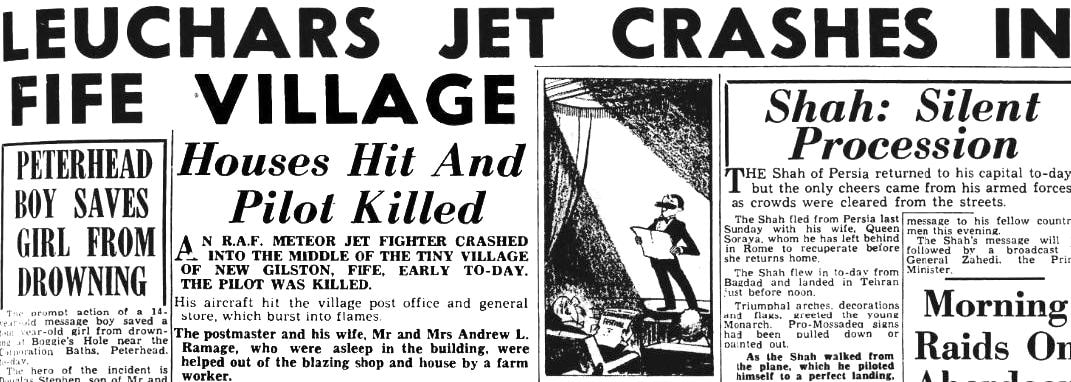

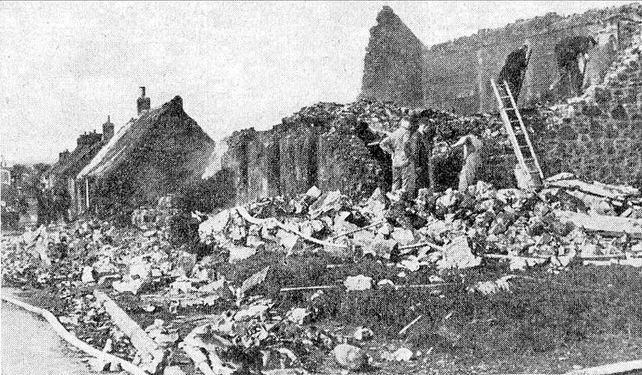
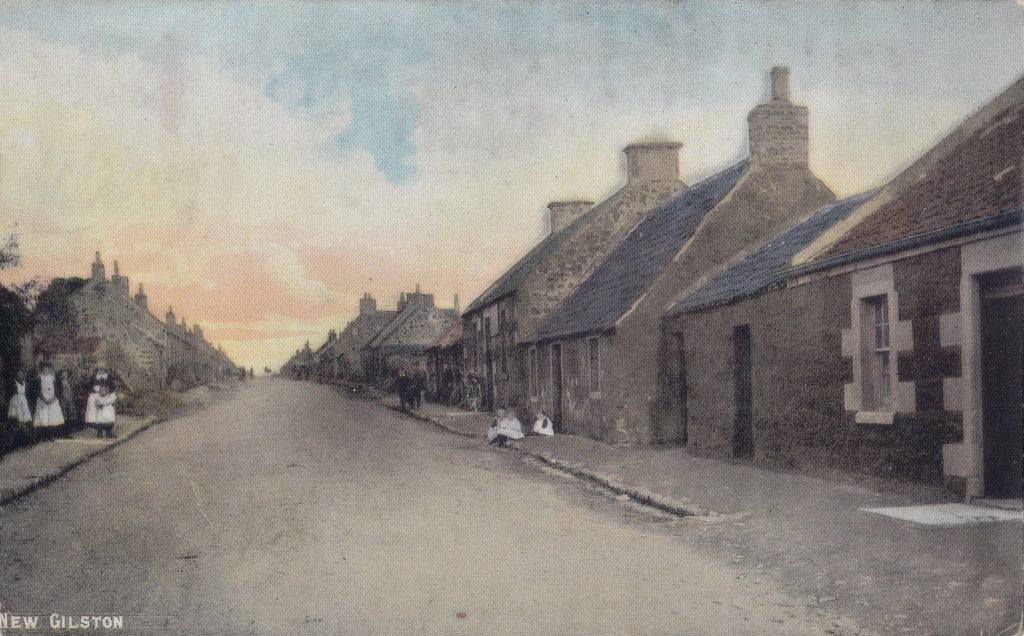
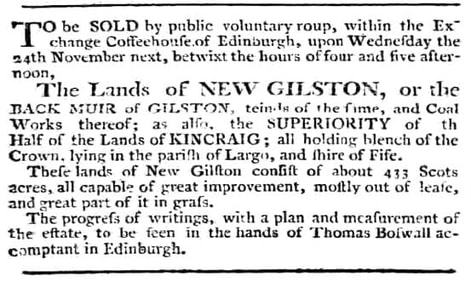
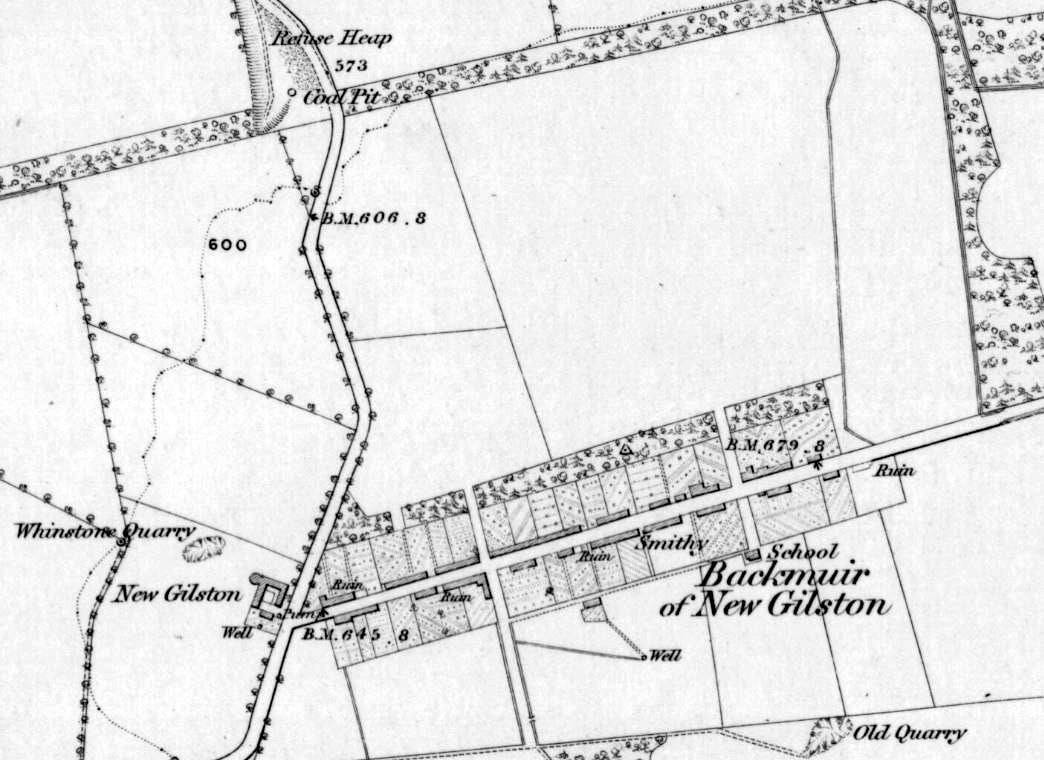
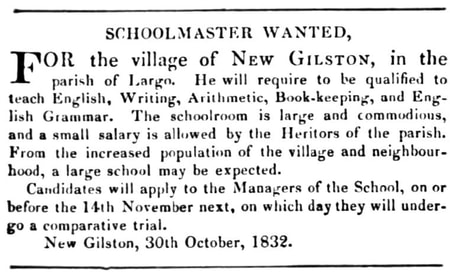
 RSS Feed
RSS Feed
